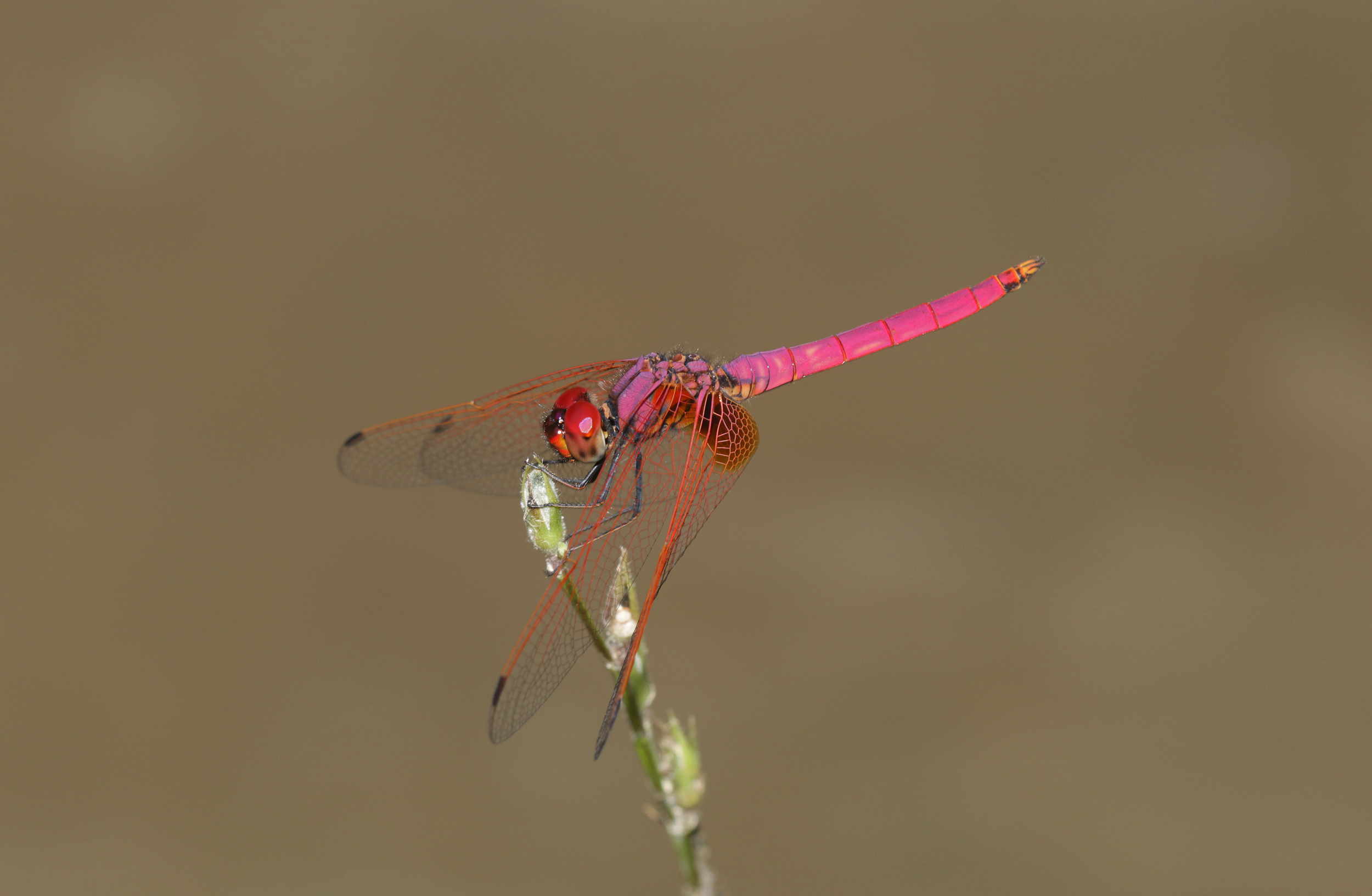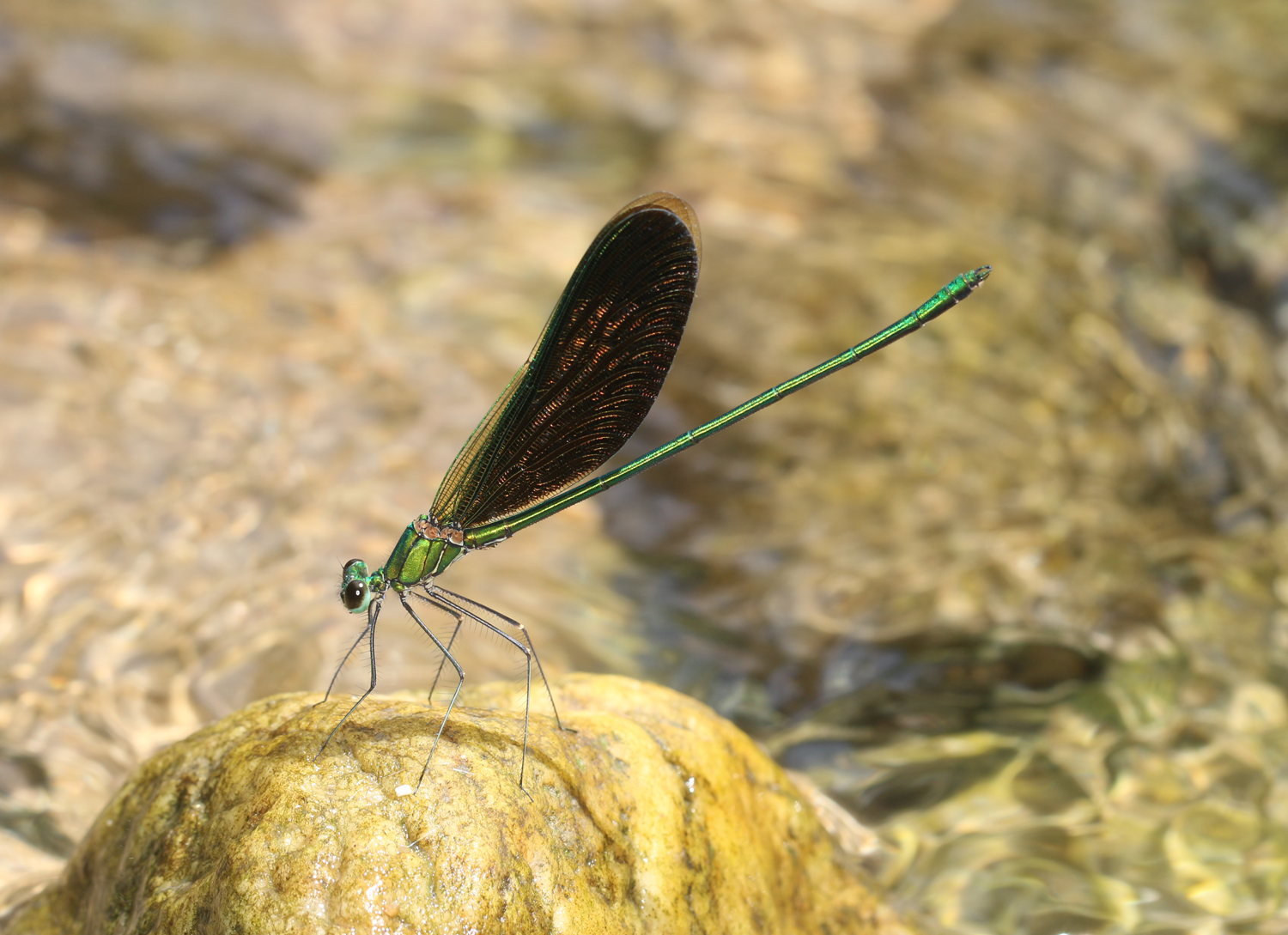| |
 If butterflies attract much attention of naturalists for their vibrant colour on wings,
dragonflies also have similar characteristics to offer.
The showy striking colour of their body amazes many onlookers.
Nevertheless, dragonflies receive less attention due to their less economical
significance compared to butterflies. Nevertheless,
they are good
If butterflies attract much attention of naturalists for their vibrant colour on wings,
dragonflies also have similar characteristics to offer.
The showy striking colour of their body amazes many onlookers.
Nevertheless, dragonflies receive less attention due to their less economical
significance compared to butterflies. Nevertheless,
they are good  indicator for aquatic ecosystem, and the larvae (nymphs) are proven to be good
biocontrol of insect pests.
indicator for aquatic ecosystem, and the larvae (nymphs) are proven to be good
biocontrol of insect pests.
Odonates, or loosely known as
dragonflies, are insects in Order Odonata, which contains three Suborders:
Anisoptera (dragonflies), Zygoptera (damselflies) and Anisozygoptera. The two former suborders are widespread whereas Anisozygoptera is represented by one species in Japan, one in the Himalayas, and two in China.
 Up to 2010, a total of 5952 extant species in 652 genera have been described.
In Malaysia alone, not less than 400 species have been recorded.
For Peninsular Malaysia, at least 250 species have been recorded until year 2010.
Up to 2010, a total of 5952 extant species in 652 genera have been described.
In Malaysia alone, not less than 400 species have been recorded.
For Peninsular Malaysia, at least 250 species have been recorded until year 2010.
Dragonflies and damselflies are
collectively referred as dragonflies. Sometimes, the term ‘odonates’ is
preferably used to avoid confusion. Odonates are conspicuous insects with two
large compound eyes, two pairs of delicate and membranous wings, and a long
slender abdomen. Their life history occurs in two different stages: aquatic and
aerial stages. The larval stage is spent in aquatic environment, and the
adulthood is in terrestrial. Both the larvae and adults are good hunters. Prey
may be stalked or ambushed.
 The adult Odonata normally congregate at freshwater bodies for mating and egg-laying.
During mating, male and female adult insects form a wheel pair with the female sex organ at the
end of tail connected to the male sex organ beneath the second abdominal segment, and the
male clasps the prothorax of female using anal appendages. The male insect normally demonstrates
courtships on the egg-laying female insect. Larvae live in the water from a few weeks to a
few months before emerging out from water to transform into adult insects.
Sexual dimorphism on colour is common in the Odonata.
The adult Odonata normally congregate at freshwater bodies for mating and egg-laying.
During mating, male and female adult insects form a wheel pair with the female sex organ at the
end of tail connected to the male sex organ beneath the second abdominal segment, and the
male clasps the prothorax of female using anal appendages. The male insect normally demonstrates
courtships on the egg-laying female insect. Larvae live in the water from a few weeks to a
few months before emerging out from water to transform into adult insects.
Sexual dimorphism on colour is common in the Odonata.
Interesting links:
A blog on Odonata of Malaysia - Click
Asia Dragonfly Net - Click
Articles/Books:
Oviposition behaviour of Euphaea impar PDF
Ancient Creatures: Dragonflies and Damselflies of Malaysia Download
Odonata of Taman Negara National Park PDF
Odonata fauna of Tioman Island PDF
|
|